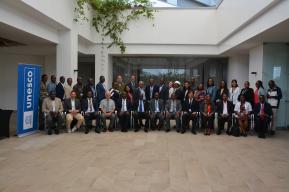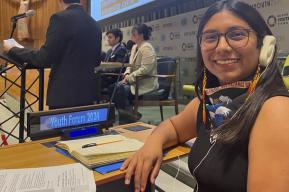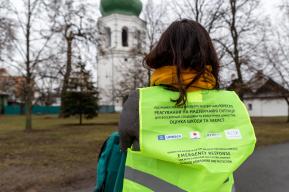News
Brazilian youth joins UNESCO environmental DNA sampling at Fernando de Noronha

Amidst sea turtle and dolphin sightings, local children collected water samples at three different locations across the UNESCO World Heritage site, including Baía dos Golfinhos (Dolphin’s Bay), Baía das Cagarras (Cagarra’s Bay) and Baía do Sueste (Sueste’s Bay). Environmental DNA samples will also be collected from Atol das Rocas, which is the World Heritage sites’ most remote part and visited by ship only once a month.
Environmental DNA is an innovative scientific method that can be used to monitor and evaluate ocean biodiversity without the need to extract organisms from their environment. Just one liter of water may contain genetic material from hundreds of species and may help determine the area’s biodiversity richness.
Involving children in the environmental DNA sampling campaign is a great way to connect local communities to the science that is needed to conserve this special World Heritage site,” says Ms Carla Cristina de Castro Guaitanele, Chief, Fernando de Noronha Marine National Park. “In the future, environmental DNA might help us to better detect invasive lionfish and prevent them from devastating our World Heritage site.
The UNESCO environmental DNA campaign is being rolled out across 25 marine World Heritage sites between September 2022 and April 2023. The eDNA data is expected to provide a one-off snapshot of biodiversity richness across marine World Heritage sites, particularly for fish species.
Combined with IPCC heat scenario projections, the initiative will help inform potential geographic and distribution shifts of fish species as a result of climate change.
Resulting data will be available at the UNESCO Ocean Biodiversity Information System, the world’s largest open science marine species database. Final results will be available in early 2024.
The UNESCO eDNA initiative is a joint collaboration between the Intergovernmental Oceanographic Commission and the World Heritage Centre. It is made possible with the support of the Government of Flanders (Kingdom of Belgium) and implemented in the context of the United Nations Decade of Ocean Science for Sustainable Development (2021-2030).
About the Brazilian Atlantic Islands: Fernando de Noronha and Atol das Rocas Reserves World Heritage site
Brazilian Atlantic Islands: Fernando de Noronha and Atol das Rocas Reserves was inscribed on the World Heritage List in 2001 for its highly productive waters which provide feeding ground for species such as tuna, billfish, cetaceans, and sharks. An oasis of marine life in a remote, open ocean, the islands have an exceptional population of resident dolphin and provide a spectacular seascape of lagoons and tidal pools teeming with fish.









